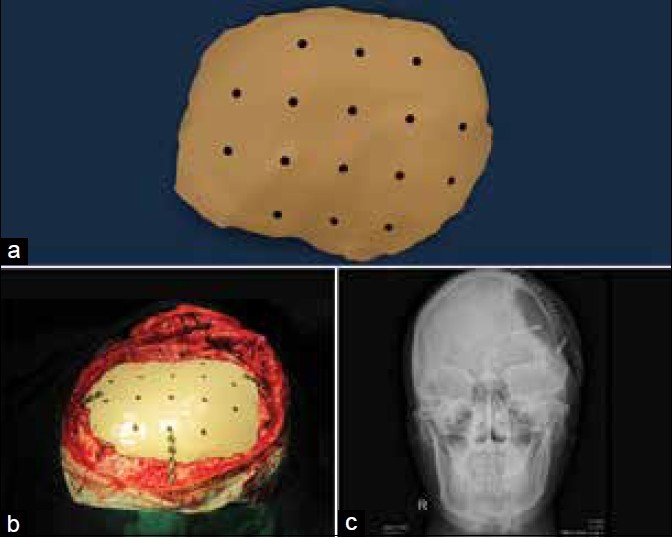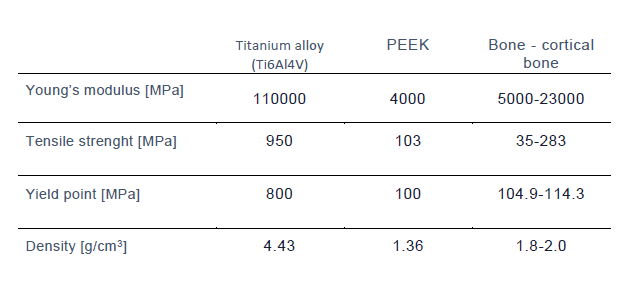Reconstructing surgery plays an important role in medicine, because defects of facial skeleton caused by disease or injury effect not only on an external appearance but also on daily functioning and mental health.
Personalized solutions which base on virtual planning of the surgery are better choice compared to standard procedures, because of much better aesthetic effects. Moreover the duration of the surgery is shorter and the risk of intra- and post-operative complications is lower.
The production of bone implants is limited only to metal materials. However in production of personalised bone implants there is an alternative such as a synthetic polimer named polyetheretherketone (PEEK).
Proper material to proper use
PEEK is used not only in maxillofacial surgery but also in spine and orthopedic surgery. PEEK is a resistant polymeric material which retains its chemical and mechanical properties even in high temperature. This material has very high abrasion resistance, low coefficient of friction and low sensitivity to temperature change. PEEK has a very good compatibility in tissue environment and retains its mechanical and physical properties during long implantation.

Implants made from polyetheretherketone can be used in complicated reconstructions, even in areas with a difficult access. Fastening implant to surrounding tissues can be made by using a standard screws chosen by a surgeon. Moreover PEEK is transparent to X-rays. Material can be sterilised by popular methods which use of: steam under pressure, gamma radiation or ethylene oxide. The manufacturing of an implant made from PEEK base on a structuring it by milling from block of material.
PEEK vs Ti6Al4V
Scientific studies carried out by reserchers from Mechanical Engineering Departmant [2] base on a finite element method of three-dimensional cranial implant model made from three generally used materials in patient-specific guides manufacture: titanium (titanium alloy – Ti6Al4V), polymethyl methacrylate (PMMA) and polyetheretherketone (PEEK), allowed to compare them in terms of mechanical properties.
They observed that titanium alloy – Ti6Al4V shows smaller deformation compered to PMMA and PEEK. The smallest effective stress showed polyetheretherketone during minimum as well as maximum load. Moreover PEEK gives better results in other aspects.

Table above shows that
Why despite so many advantages and similarities of PEEK’s mechanical parameters to the bone PEEK is still not so popular as titanium alloy Ti6Al4V?
The cost of implant made of PEEK is higher than titanium alloy. The integration of PEEK’s implant to surrounding bone structures is faster than in titanium porous or hybrid implants case. Mechanical strength of material is very important during material selection and in titanium case it’s better. Our earlier blog post Titanium as implant material enables to familiarise with classification and important mechanical properties of titanium.
Summarising: although polietheretherketone implants are not so popular on medical market than titanium implants it’s worth to take them under consideration as an alternative. Every case should be analysed separately.




